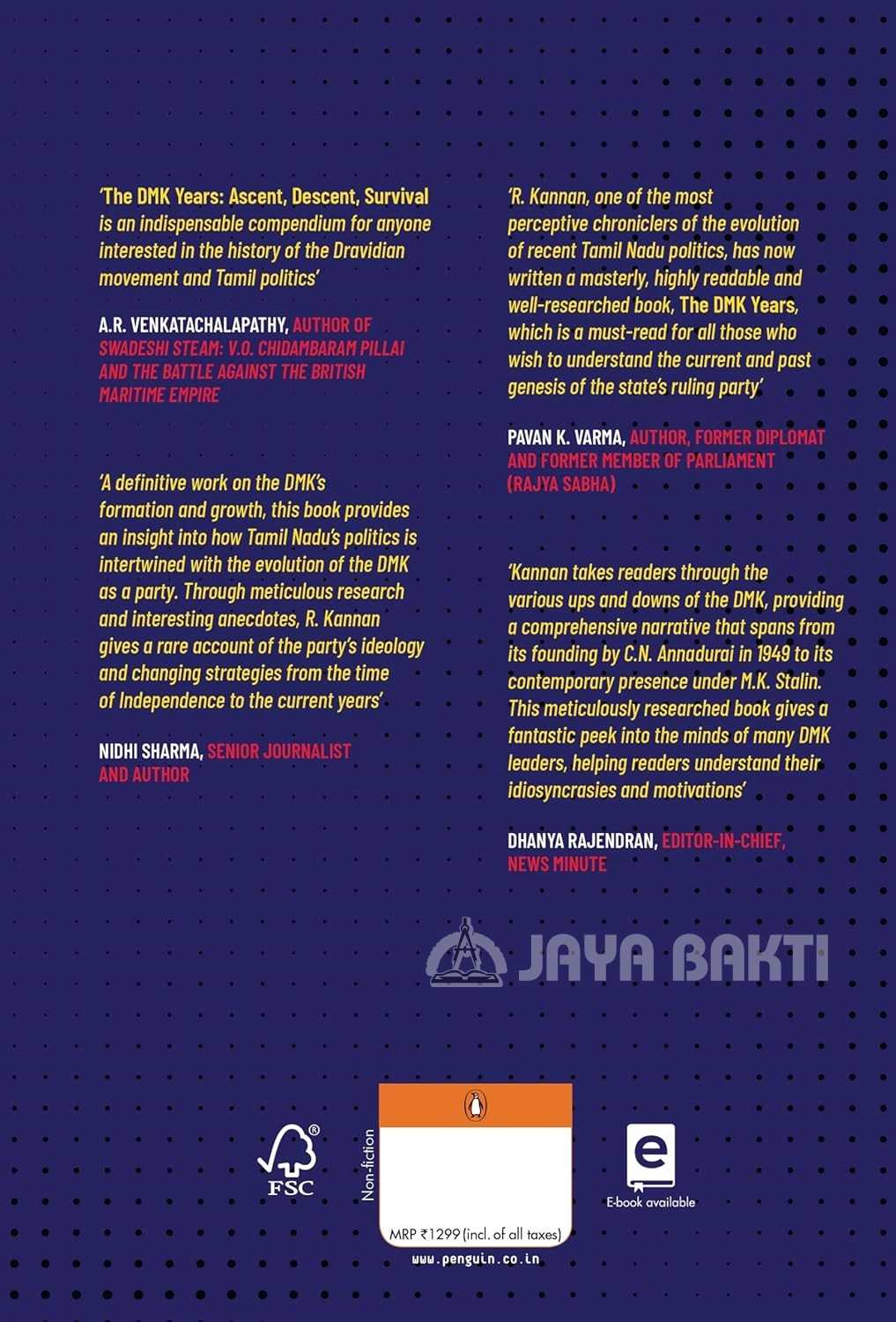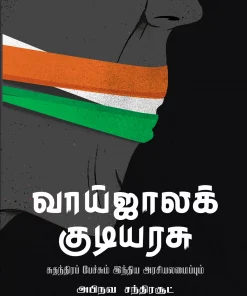The DMK Years: Ascent, Descent, Survival
RM149.50 Save up to 20% on this product as a member. Subscribe Now!
In stock
On 17 September 1949, C.N. Annadurai (Anna) founded the DMK after his split with Periyar E.V. Ramaswamy. The DMK slowly but surely caught the imagination of the Tamil masses. In 1962, faced with the prospect of a ban, the party shed its separatist agenda and in 1967, the DMK attained power for the first time in Tamil Nadu. Since then, it has remained a potent political force, first under M. Karunanidhi and recently under M.K. Stalin, who succeeded him.
Weathering many a political storm, including the 1972 split when its mascot, M.G. Ramachandran (MGR) broke away levelling corruption charges, its ejection from power in 1976 during the Emergency, the second dismissal in 1991 for its alleged dalliance with the Tamil Tigers of Sri Lanka, and the debilitating split in 1993, the party has proved resilient. It was voted back to power in Tamil Nadu in 2021.
The DMK’s pioneering public distribution system and welfare populism have been a model for other states. Of late, the party has touted its ‘Dravidian Model’ of development as a viable national alternative. Its renewed emphasis on Tamil cultural nationalism and cooperative federalism aims to counter the current majoritarian political narrative.
Yet, seventy-five years later, the DMK is more than ever under assault from caste and ultra-nationalist elements and persisting charges of unjust enrichment and dynastic politics.
At this pivotal moment in history, as the ethos of Indianness is being redefined, veteran political observer and commentator R. Kannan explores the trajectory of the DMK and its future direction. Drawing on a substantial body of first-hand accounts, The DMK Years narrates the story of the party objectively and in its entirety, making this volume essential to understanding the contours of Tamil Nadu politics.
| Weight | 1.1 kg |
|---|---|
| Dimensions | 15.3 × 4.1 × 23.4 cm |
| Pages | 752 |
| Book Author | R.kannan |
| Language | English |
| Published Year | 2024 |
| Publisher | india viking |
Be the first to review “The DMK Years: Ascent, Descent, Survival” Cancel reply
Related products
Politics
The Communist Manifesto (Tamil Edition) / Communist Katchi Arikkai / கம்யூனிஸ்ட் கட்சி அறிக்கை
Biography/ Sandror
New Arrivals
Politics
Politics
Crime, Thriller & Mystery
Non Fiction















Reviews
There are no reviews yet.